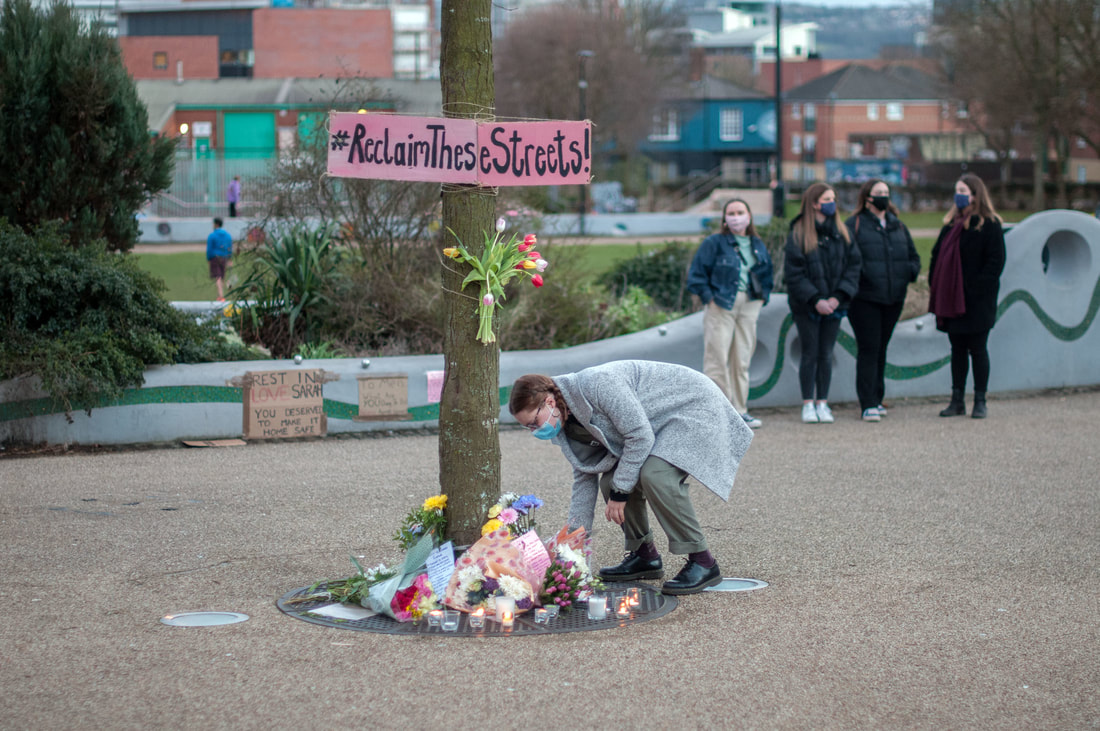|
By O. Lotufo It was March 3rd, 9:30 pm; a typical Wednesday night in London, and the last time Sarah Everard was seen alive.
Sarah’s final known footage was caught as she passed before a house’s doorbell-camera whilst making a phone call and walking home. On March 4th, she was declared missing by her boyfriend; a series of actions were then taken by the police, including the interrogation of more than 750 people, surveillance of CCTV recordings, and the search of public spaces for evidence. On March 8th, five days after Sarah was last seen, the Police declared the arrest of Wayne Couzens, a 48-year-old Metropolitan Police Officer, for his alleged involvement in her disappearance. Due to Couzens’ address being located in Kent, a county in south-eastern England, the Met Police searched two locations in the same region. This consequentially led to the uncover of human remains in a woodland area near Ashford (a town in Kent), which were later identified, through dental records, to be those of Sarah Everard. Following these new discoveries, Wayne Couzen was charged with kidnap and murder. After two inconclusive post-mortem examinations, Sarah’s precise cause of death is still unknown. The tragic killing of Sarah Everard caught the attention of not only the British, but also of the international population through its various coverages on the media and the news. The support for Sarah’s family, and the shared grief amongst citizens was explicit, as shown by the piles of flowers gathered in her memory, near where she was last seen before her disappearance. After Sarah Everard’s death, a vigil was held in her tribute; due to Covid regulations, social-distancing regulations were imposed, prohibiting large gatherings such as the wake. However, hundreds of people showed up, protesting police brutality and advocating for women’s right to public safety. The gathering eventually led to officers being required to intervene, which resulted in videos showing footage of violent actions being performed by the police, including women being pushed to the ground and pinned down by officers. In itself, Sarah’s case is unsettling and truly appalling, yet what many all over the world couldn’t allow to be passed unnoticed was the various other instances in which women were victims of violence, especially in Britain. The fact that Sarah Everard was killed by a male police officer, followed by the aggressive actions during her vigil, sparked and gave voice to a movement demanding women’s public safety and a change within the police organization. What many in Britain currently believe is that “The state is the single biggest threat to women’s health and safety” (Charlotte Shane, The Intercept); groups and associations protesting for such rights continue to arise, and the need for security is of major importance as police brutality against women increases. Bibliography: https://www.nytimes.com/2021/03/21/world/europe/sarah-everard-police-uk.html? https://www.bbc.com/news/uk-england-london-56331948 https://www.independent.co.uk/news/uk/crime/sarah-everard-news-missing-wayne-couzens-b1815730.html https://www.abc.net.au/news/2021-03-20/sarah-everard-death-one-week-on/13261376 https://theintercept.com/2021/03/15/sarah-everard-london-police-reclaim-these-streets/
0 Comments
Your comment will be posted after it is approved.
Leave a Reply. |

